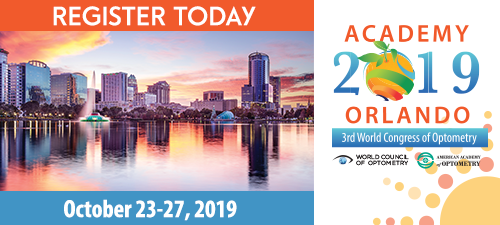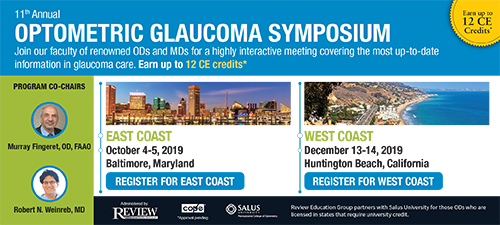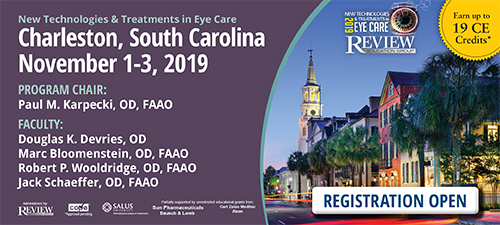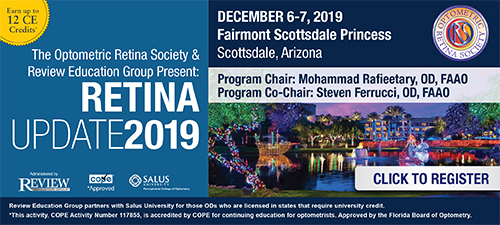
A
weekly e-journal by Art Epstein, OD, FAAO
Off the Cuff: Degrees of Misery
I suspect that something like this has happened to you during your career. If it hasn’t, it likely eventually will. Sadly, this was not my first such experience. Today we received a call from an MD who has long suffered from severe dry eye. She had been managed by a well-known medical clinic’s dry eye center, but had not found any relief. Desperate for help, she stumbled upon our website. She saw our high reviews and positive comments from other patients. None of it comes even close to reflecting just how successful we’ve been at helping even the worst suffering patients. The ones where artificial tears roll off their eyes like water off a duck’s back with little, if any, relief.
|
|||||
 |
||
| Incidence of Intraocular Lens Exchange After Cataract Surgery | ||||
Intraocular lens (IOL) exchange after cataract surgery is unusual but may be associated with suboptimal visual outcomes. The incidence of IOL exchange has not been consistently estimated. Such information is invaluable when counseling patients prior to cataract surgery. Researchers examined the incidence of, and indications and risk factors for, IOL exchange after cataract surgery. They also assessed visual outcome of eyes that had an IOL exchange. A cohort design was used to estimate the incidence of IOL exchange, and a case-control design was used to identify factors associated with it.
All phacoemulsification surgeries with IOL (n=17,415 eyes) between 2010 and 2017, and those that had a subsequent IOL removal or replacement during the same time period were identified (n=34 eyes). The incidence of IOL exchange was two per 1000 surgeries over eight years. Eyes that underwent subsequent IOL removal or replacement were compared with eyes that had cataract surgery only (n=47) across demographic and clinical characteristics. In a binary logistic regression analysis, two factors were significantly associated with IOL exchange/removal: an adverse event during cataract surgery and a pre-existing ocular comorbidity. The effect of gender was marginally significant. Eyes that underwent IOL exchange or explantation were nearly two-and-a-half times more likely to have a final best-corrected visual acuity of <20/60 compared to those that had cataract surgery alone. |
||||
SOURCE: Abdalla Elsayed MEA, Ahmad K, Al-Abdullah AA, et al. Incidence of intraocular lens exchange after cataract surgery. Sci Rep. 2019;9(1):12877. |
||||
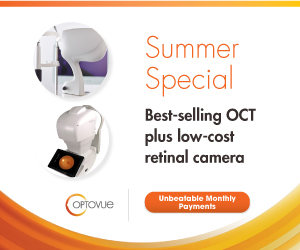 |
||
| Investigation of Medication Adherence and Reasons for Poor Adherence in Patients on Long-term Glaucoma Treatment Regimes | ||||
Long-term treatment adherence for chronic asymptomatic conditions is a demanding task for many patients. Treating progressive glaucoma can also be confounding for physicians, particularly when management relies on assumption of adherence. This study investigated associations between self-reported adherence and frequency of medication changes due to glaucoma progression. A total of 128 participants with primary open-angle glaucoma were recruited from glaucoma clinics in Flinders Eye Center, South Australia, and completed confidential questionnaires. Information was obtained regarding beliefs about glaucoma and treatment. Adherence was assessed using the four-item Morisky, Green and Levine Medication Adherence Questionnaire (MGL). Medical records were analyzed for the number of medication changes, due to glaucoma progression.
Adherence to topical glaucoma medication was categorized as “high” in 41.4% by the MGL. Data were analyzed for behaviors affecting adherence, history of adherence and reasons for changed adherence. Chi-squared tests demonstrated no significant association between adherence and changes in medication regimes; however, a significantly lower adherence was detected if participants had difficulties with their drop regime or had help with drop insertion. This study revealed a higher rate of non-adherence than has previously been demonstrated in other studies. Investigators wrote that this might be attributed to the unique design of the confidential questionnaire, and the independent and sympathetic questioning techniques used. They added that further work to develop a specific glaucoma medication adherence questionnaire would be valuable to enhance glaucoma management. |
||||
SOURCE: McClelland JF, Bodle L, Little JA. Investigation of medication adherence and reasons for poor adherence in patients on long-term glaucoma treatment regimes. Patient Prefer Adherence. 2019;13:431-9. |
||||
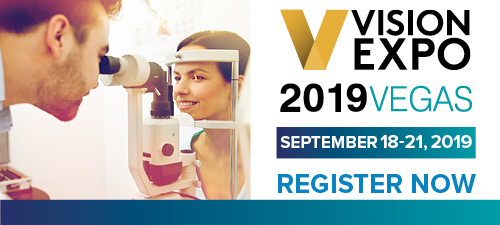 |
||
| Incidence and Outcomes of Ocular Hypertension from Rhegmatogenous Retinal Detachment Surgery in the Acute Postoperative Setting | ||||
A single-center prospective cohort study involving patients who underwent retinal surgery for rhegmatogenous retinal detachment was conducted to determine the incidence of ocular hypertension following surgery for rhegmatogenous retinal detachment in the first three months postoperatively, and to determine outcomes in terms of visual acuity, IOP control and changes in cup:disc ratio. The patients were followed for three months postoperatively and monitored for development of ocular hypertension. The primary outcome measures were changes in IOP, visual acuity and cup:disc ratio. Of the 52 eyes enrolled in the study, 19 developed ocular hypertension in the first three months postoperatively, for an incidence rate of 36.5%. Analysis of mean IOP trends showed that most cases of IOP elevations occurred in the first day postoperatively, with a sustained elevation up to the first month before returning to normal levels by the third month. Researchers found a significant increase in mean cup:disc ratio among patients who developed ocular hypertension. Visual acuity trends showed that mean visual acuity significantly improved from baseline among cases who maintained normal IOP as compared to those who developed ocular hypertension, although the difference in final visual acuity at the end of three months between groups was not statistically significant. Researchers determined that ocular hypertension might complicate retinal reattachment surgery. They added that control of IOP in the acute setting was essential to prevent the development of secondary glaucoma. |
||||
SOURCE: Bromeo AJ, FlorCruz NV. Incidence and outcomes of ocular hypertension from rhegmatogenous retinal detachment surgery in the acute postoperative setting. Clin Ophthalmol. 2019;13:1559-66. |
||||
| News & Notes | |||||||||||||||
| 2019 Academy Resident Travel Fellowship Recipients Announced The American Academy of Optometry has named the recipients of the 2019 Resident Travel Fellowship Awards. The fellowships enable residents to attend Academy 2019 Orlando and the 3rd World Congress of Optometry, Oct. 23-27, through the Allergan-sponsored awards. View the recipients. |
|||||||||||||||
| AAOF Announces Fredric Rosemore Low Vision Educational Grant Recipient The American Academy of Optometry Foundation, in collaboration with the Fredric and Marion Rosemore Family Foundation, announced the 2019 recipient of the Fredric Rosemore Low Vision Educational Grant. So-Yeon Sharon Lee, OD, FAAO, Dipl-ABO, is an assistant professor at Nova Southeastern University College of Optometry. She will receive a grant for her project titled “Managing Visual Comfort And Function in Patients With Low Vision Using Acuvue Oasys With Transitions Contact Lenses,” which is intended to improve the quality of life for the visually impaired. The grant is designed to enable institutions to provide care and support personnel directly related to the field of low vision. Dr. Lee will be honored at the AAOF Celebration Luncheon during Academy 2019 Orlando and 3rd World Congress of Optometry (Oct; 23-27). Read more. |
|||||||||||||||
| Registration Now Open For ISVA Conference Registration is now open for Beyond 20/20, the 4th Annual International Sports Vision Association conference, Feb. 6-8, 2020, at the Bahia Resort Hotel in San Diego. This year’s meeting kicks off with two separate day-long pre-conference workshops (Feb. 6). Each will each offer up to six hours of continuing education (COPE approval pending) through a combination of lecture and hands-on style presentations, including various evaluation and training techniques, and equipment highlighted by experienced sports vision professionals. Read more. |
|||||||||||||||
| J&J Vision Showcases Latest Data & Solutions at ESCRS Annual Meeting Johnson & Johnson Vision will highlight key clinical data and the latest solutions in its growing portfolio of products designed to improve vision care across generations, at the European Society of Cataract and Refractive Surgeons Annual Meeting in Paris, Sept. 14-18. At ESCRS 2019, Johnson & Johnson Vision will highlight innovations designed to address the needs of those living with cataracts. The company will offer a series of educational sessions about the latest advancements in surgical vision, as well as announce the upcoming availability of its new Tecnis Synergy IOL and preloaded SmartLoad Delivery Technology cartridge designed to optimize monofocal IOL delivery with reusable Unfolder Vitan inserter. Furthermore, the company will share insights around its latest TearScience LipiScan Dynamic Meibomian Imager and LipiFlow Thermal Pulsation suite of products and expanded availability across Europe. Visit the booth at Pavilion 7, Floor 7.2 Booth #E112. Learn more. |
|||||||||||||||
| Boost Epi-On Corneal Cross-Linking Data to Be Presented at 37th Congress of ESCRS Avedro announced the inclusion of several Boost Epi-On cross-linking presentations in the scientific and educational programs at the 10th EU Cornea Congress and the 37th Congress of the European Society of Cataract and Refractive Surgeons. The presentations will unveil the early clinical experiences of several clinicians from multiple geographies who have evaluated the company’s next-generation corneal cross-linking treatment for keratoconus. Boost Epi-On CXL, a noninvasive corneal cross-linking procedure that doesn’t require removal of the epithelium and addresses the limitations of prior epi-on procedures through the addition of supplemental oxygen. Avedro is conducting a Phase III clinical trial to evaluate a similar version of the Epi-On procedure in the United States for the treatment of progressive keratoconus. Read more.
|
|||||||||||||||
|
|||||||||||||||
|
|||||||||||||||
|
Optometric Physician™ (OP) newsletter is owned and published by Dr. Arthur Epstein. It is distributed by the Review Group, a Division of Jobson Medical Information LLC (JMI), 11 Campus Boulevard, Newtown Square, PA 19073. HOW TO ADVERTISE |


